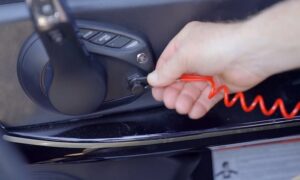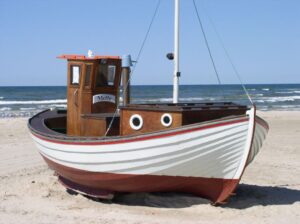Discover six techniques for accelerating your boat.
- Reduce Weight
- Don’t Over-Trim
- Improving Your Propeller
- ECM Reflashing
- Boat Jack Plate
- Blueprinting for Speed
Simply put, the thrill of moving quickly through the water is a big part of what makes boating fun. Furthermore, if quick is good, then quick must be better. Here are a few quick tips to help almost any family boat run as fast as it can.
The hull and, in high-performance applications, the drives are the main areas of emphasis in blueprinting. The prop could be changed or fine-tuned, which would be the simplest upgrade. The electronic control module (ECM) for the engine can be reprogrammed, or a supercharger can be added. Finally, those who enjoy outboard motors might think about adding a jack plate.
Discover the advantages and disadvantages of pursuing higher speeds by reading on.
Reduce Weight
Reducing weight is like finding free horsepower, and many boat owners are surprised by how much weight they can leave on the dock.
- Then, only the necessities should be reinstalled. Start at the bow and work your way back, emptying every storage compartment.
- Each item may not seem like much, but when added together, the extra towels, old sunscreen bottles, extra fishing rods, and spare cooler add up. We’ve seen boat owners jettison 250 pounds of “stuff” they didn’t really need on board.
- Because the hull rides a little higher in the water, a lighter boat will accelerate more quickly and run with less drag. It might also be more responsive to trimming, which can lessen drag even more.
- To avoid weighing down the bow, try to store bulkier items you do want to keep on board, like a spare propeller, in an aft storage compartment.
Finally, on days when you want to move as quickly as possible, empty the fresh water and holding tanks on your boat, if it has those features, and set sail with a tank of fuel that is less than full.
Don’t Over-Trim
The old racer’s motto when in doubt trim it out is true up to a point. By reducing the wetted surface of the hull and thereby drag, trimming out the sterndrive or outboard raises the bow and increases speed. However, if you simply trim to the limit, you risk over-trimming and potentially reducing top speed.
The prop will eventually ventilate, or become contaminated with air, as you trim out the drive, move closer to the water’s surface, lose its grip on the water, and eventually become airborne. While engine RPM may continue to rise, speed will begin to decrease. Any device with a GPS-generated speed display, such as a speedometer, makes it simple to see this.
- Run the boat up to full throttle, add trim very gradually by lightly pushing the trim button with your thumb, and monitor boat speed.
- The prop may be beginning to slip if you notice a slight change in pitch in the sound behind the boat; this could cause your speed to fall by one or two MPH.
- However, there are times when you can’t hear the prop slip, which is why the GPS is useful.
- If boat speed goes down, bump the trim back down just a little until the prop “hooks up” again and your speed is restored.
Improving Your Propeller
The mechanical components of your boat, most notably its propeller, should be upgraded as this is one of the best and most reliable ways to increase its speed. Naturally, replacing the propeller can be expensive, costing several hundred dollars (and occasionally even more).
A stainless steel propeller can likely increase your top speed if your current one is made of aluminum. Stainless steel is a stronger, more resilient material than aluminum, allowing you to reduce drag in the water with thinner blades.
Additionally, as time passes, they will become more resistant to damage, enabling you to keep up a constant level of performance.
You should also consider the pitch of your propeller. A bicycle’s gear changes are analogous to changing the propeller pitch in some ways.
Higher gears require more force to start but have a much higher top speed. Lower gears allow you to accelerate quickly but eventually, you won’t be able to transmit as much force as you need to climb speed.
ECM Reflashing
You can have the Engine Control Modul (ECM) flashed to increase the power output if your vessel is propelled by a fuel-injected engine. The engine timing, spark curve, and airflow are all under the ECM’s control.
The ECM chip can be programmed to increase the amount of fuel and air that enter the engine’s cylinders. This will lead to more potent combustion when the piston compresses the mixture, increasing power output, and boat speed.
Boat Jack Plate
A jack plate is made to lessen the drag that your boat feels as it moves through the water. Your boat will move much more slowly because more drag is created the lower your outboard motor is submerged in the water.
A jack plate uses plates to raise the outboard motor’s lower unit so that there is less of it hanging in the water. This effectively lowers drag and increases your boat’s overall efficiency.
The best jack plates are made of corrosion-resistant aluminum so they will last a long time and increase your speed by up to 10 mph.
Blueprinting for Speed
The process of “blueprinting” involves restoring your boat’s hull to its original form and configuration from the manufacturer. Your hull may develop a hook or rocker over time, reducing the top speed you can travel.
Custom blueprints work to remove these flaws and give your hull a new, sleek finish that improves how well your boat can move through the water. Your top speed can increase by 5 to 10 mph with blueprinting, and it lasts for about two years.
Conclusion: Have a Faster Boat!
Additionally, boat speed has a significant impact on fuel efficiency. More fuel will be burned the faster you travel. Owners will inevitably have to make this trade-off. Although traveling quickly can be fun, keep in mind that it will also increase the cost of your trip.
FAQs
What Pitch Prop Will Make My Boat Faster?
The lower the prop pitch, the better your hole shot. But top speed is the price for this. Because of the lower pitch, the engine runs at its highest rpm at slower speeds. A higher pitch, on the other hand, will result in faster top speeds but slower acceleration.
How Fast Does a 220-Hp Boat Go?
S = sqrt(P / D) * C = sqrt(3000 / 6800) * 220 = 146.13 mph, i.e., the speed of the hydroplane is about 146.13 miles per hour.


